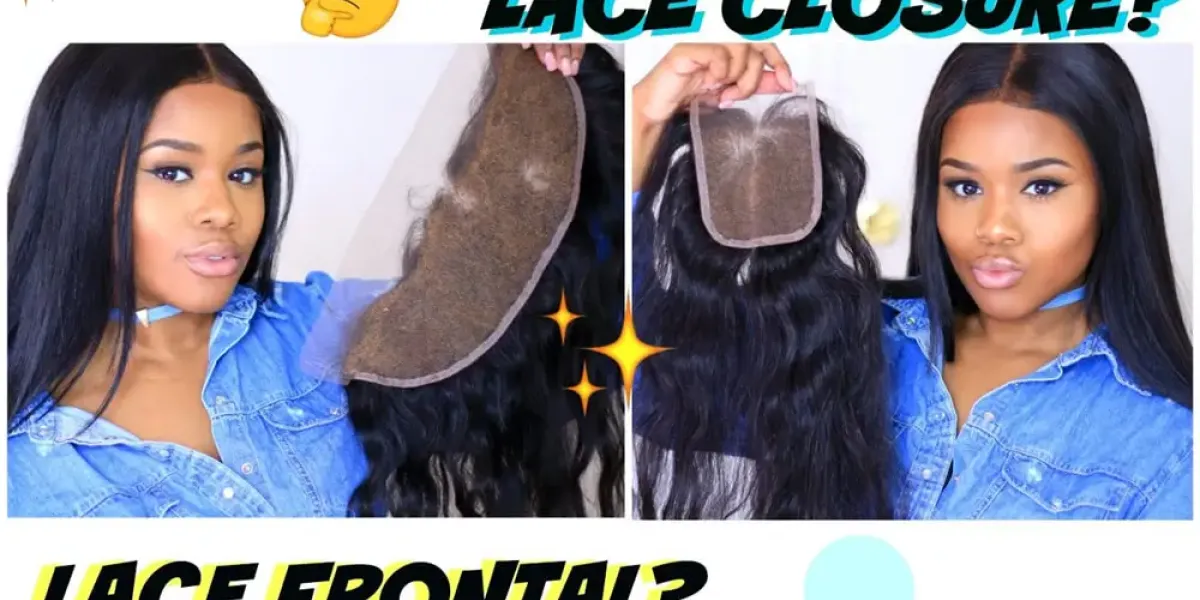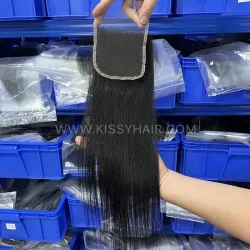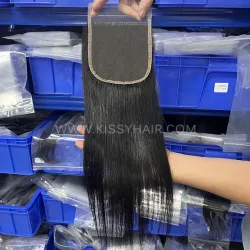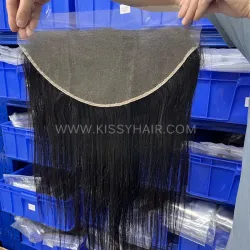Lace Closure vs Lace Frontal

When it comes to wigs and hair extensions, lace closures and lace frontals are among the most popular options, each offering unique benefits for creating natural, seamless hairstyles. To help you decide which option suits your needs, let’s dive into a detailed comparison of these two essential hair products.
1. Size and Coverage
Lace Closures:
Lace closures are smaller in size, typically measuring 4x4 inches, 5x5 inches, or 6x6 inches. They cover a limited portion of the scalp, usually at the crown or along a pre-defined part. Closures work well for those who prefer a more focused area of coverage, such as a middle or side part, without the need to style the hairline.Lace Frontals:
Lace frontals, on the other hand, are much larger and generally measure 13x4 inches or 13x6 inches, spanning the hairline from ear to ear. This provides full hairline coverage, making frontals ideal for recreating a natural-looking hairline and offering more flexibility in hairstyling.
2. Styling Options
Lace Closures:
Closures are great for simpler hairstyles. Since they focus on a specific area, closures are best for achieving a sleek and polished look with a defined middle or side part. However, they don’t allow for styles that expose the entire hairline or pulled-back hairstyles like ponytails.Lace Frontals:
Frontals are the go-to option for maximum versatility. With a frontal, you can style your hair in countless ways, from ponytails to braids to updos. The extended lace area allows for parting flexibility, enabling wearers to switch up their look effortlessly.
3. Installation Process
Lace Closures:
Closures are typically sewn in along with hair bundles. This method is straightforward and secure, making it ideal for those who want a low-maintenance solution.Lace Frontals:
Frontals require a more intricate installation process, often involving adhesives such as glue or tape to secure the lace along the entire hairline. While this creates a natural appearance, it also demands more upkeep to maintain the adhesive and alignment.
4. Maintenance and Durability
Lace Closures:
Due to their smaller size and simpler installation, closures are easier to maintain. They are also less prone to damage and typically last longer with proper care.Lace Frontals:
While frontals offer styling flexibility, they require more maintenance. The adhesives used in installation need regular reapplication, and the larger lace area is more delicate and prone to wear and tear.
5. Cost Considerations
Lace Closures:
Closures are generally more affordable, making them an excellent option for those on a budget or looking for a simpler styling solution.Lace Frontals:
Frontals are more expensive due to their larger size, versatility, and ability to replicate a natural hairline. For individuals who prioritize styling options, the higher cost may be worth the investment.
Which One Should You Choose?
When choosing between a lace closure and a lace frontal, your decision should be based on your styling needs, budget, and maintenance preferences.
Choose a Lace Closure if you:
- Want a low-maintenance option.
- Prefer a defined middle or side part.
- Are looking for a budget-friendly solution.
Choose a Lace Frontal if you:
- Desire a natural, full hairline look.
- Want the flexibility to style your hair in different ways.
- Don’t mind the additional maintenance.
Conclusion
Both lace closures and lace frontals offer incredible benefits for achieving beautiful, natural hairstyles. While closures are perfect for those seeking simplicity and durability, frontals provide unmatched versatility for more elaborate styling needs. Understanding the differences between the two will help you make an informed choice that aligns with your preferences and lifestyle.
By taking the time to select the right product, you can ensure that your hairstyle looks flawless and perfectly tailored to your needs.





Leave a Comment